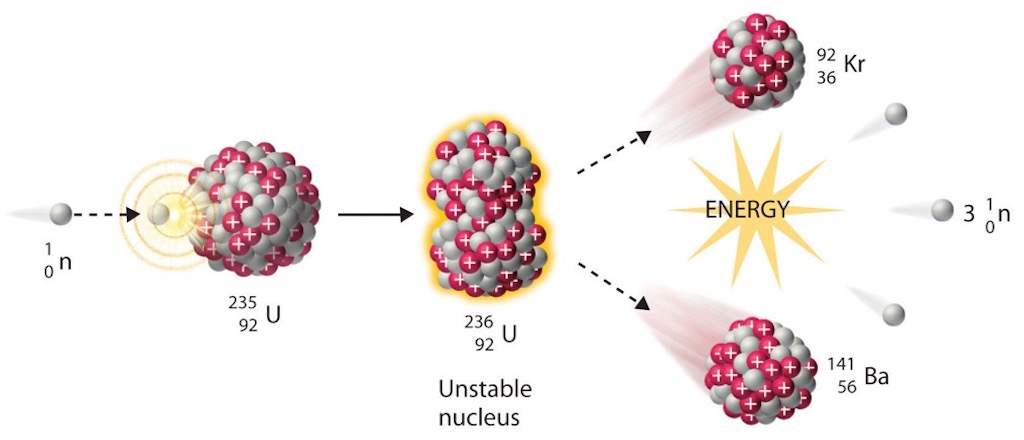What I found interesting… in 2024
I’m not sure why an article from British Vogue on “Metabolic Health” should end up here, but it’s up to the reader to decide if they find it useful. However I want to quote one paragraph that I think is vital for everyone to read…
“As an example, two thirds of our calories now come from ultra-processed and industrially manufactured foods that are nutrient depleted, while we’re sleeping about 25 per cent less on average than we were 100 years ago. We’re more isolated than ever, with nearly one in four of us reporting feeling lonely on a daily basis. And sedentary lifestyles are the norm in the Western world – most of us are sitting for about 80 per cent of the day. “There’s also more than 80,000 synthetic toxins and chemicals that have entered our food, water, air, personal and home care products, furniture and electronics over the past 100 years, many of which are direct metabolic disruptors”, says Dr Means. “And the average American gets 19 prescription medications per year – the cumulative impact of taking that like it’s candy is having a profound impact on our metabolic health”.
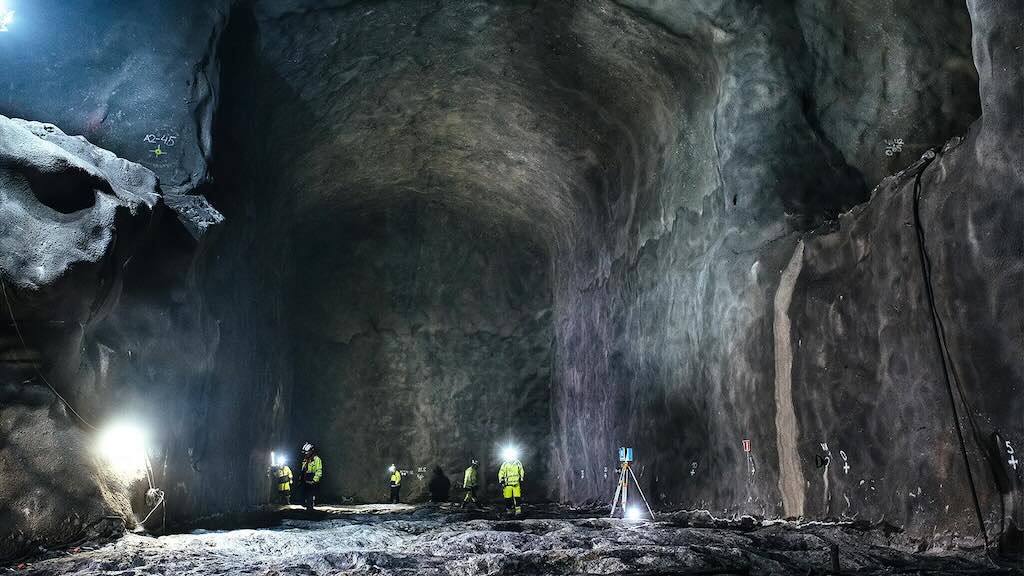
This BBC article is about a burial place (a geological disposal facility or GDF) for intermediate and high-level nuclear waste in the Champagne region in northeastern France. This is all about very stable bedrock, no/low seismic activity, and trying to avoid influencing the local environment by going deep underground.
“It’d be foolish to think that you could rely on today’s technology in a facility with the timescale of a GDF”,… “so, we must design the facility to be repairable, upgradable, replaceable and resilient”. And In France there is a legal requirement that any waste that is deposited in the GDF during its operational phase must be safely retrievable (which is not a legal requirement in other places). I’m not sure the nuclear industry has proven it can do all this, but it certainly is the only industry that can try.
The 2024 Nobel Prize in Physics was awarded for the use of statistical physics concepts in the development of artificial neural networks. Artificial neural networks play a fundamental role in machine learning and artificial intelligence by allowing machines to find and recognise patterns in extremely large datasets.
What this does not mention is the link to Google DeepMind and AlphaFold, which performs predictions of protein structure. And this article looks at the impact of AlphaFold2 on the protein folding problem, and its impact on protein science.
What is also interesting is that this work is powerful to finding solutions to problems such as protein folding, but does it describe the underlying physical principles and processes that lead to the solutions?
Read the article. It’s about the idea that the brain tags experiences worth remembering by repeatedly sending out sudden and powerful high-frequency brain waves. Known as “sharp wave ripples”, these waves, kicked up by the firing of many thousands of neurons within milliseconds of one another.
This is all about how the brain tags a certain experience to remember, but it does not tell us how the brain decides what’s worth remembering.
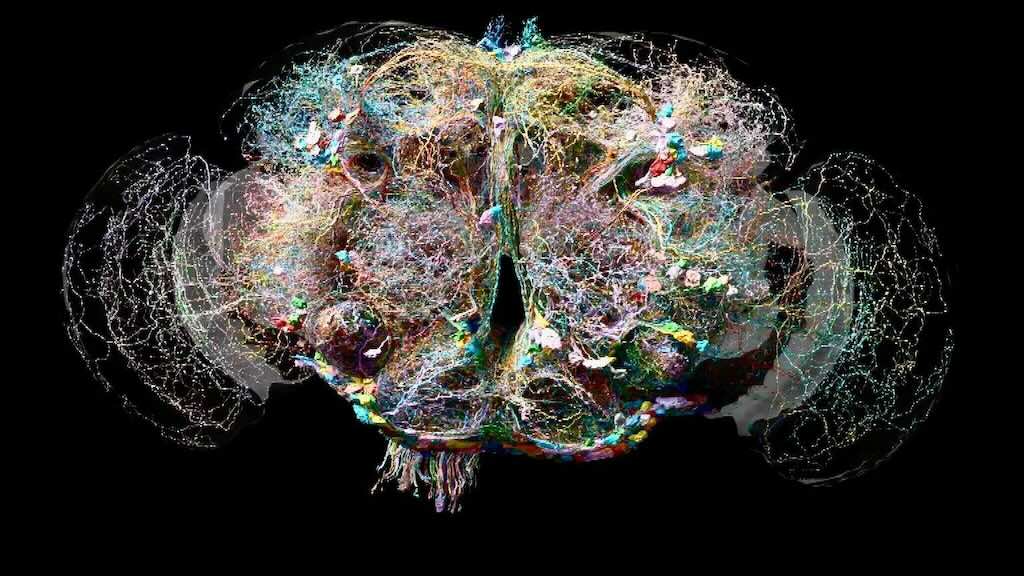
Scientists have identified the position, shape and connections of every single one of a fly’s 130,000 cells and 50 million connections. It’s the most detailed analysis of the brain of an adult animal ever produced.
What this means they have built a whole-brain connectome with a systematic and hierarchical annotation of neuronal classes, cell types and developmental units (hemilineages or the lineage of either the male or the female line).
Witnessed formation of tiny water bubbles in real time
There were a number of pointers to a scientific publication that mentioned seeing in real time “hydrogen and oxygen atoms merge to form tiny, nano-sized bubbles of water”.
It this article that links to the actual videos showing the in situ generation of H2O nanobubbles.
Not sure who asked the question, but it looks like the same group of genes is responsible for thorns in very different varieties of plants. More interestingly is that thorns do a number of different things, including defence, water retention, and climbing, and despite their physical similarities, they are known to have evolved independently at least 28 times. That is an example of convergent evolution, i.e. they haven’t all come from a common, prickly, ancestor.
Interesting read, and equally an interesting application of CRISPR.

Just go and look at this fantastic visualisation, and then have a look at the entry below.

The idea that atoms are mostly empty space, and therefore matter is also mostly empty space is frequently mentioned, but this article challenges the idea.
So how can substances made out of volume-less entities (point particles) come to occupy space at all, creating the world and Universe as we observe it?
To summarised, the article explains that constituents of matter actually have three important characteristics, namely no two identical particles can occupy the same quantum state in the same location, that particles have charges and those charges dictate the type and magnitude of force(s) that they experience, and some particles have a finite, positive, non-zero rest mass. The result is that they must have some finite sizes even when composed of infinitesimally small constituents.
The low but non-zero mass of the electron, the strong, negative electric charge of the electron, along with the massive, positively charged atomic nucleus, and finally the fact that two identical quantum particles can’t occupy the same quantum state, means that atoms, and hence all objects here on Earth, occupy finite volumes.
So even point-like particles wind up occupying a lot of space.
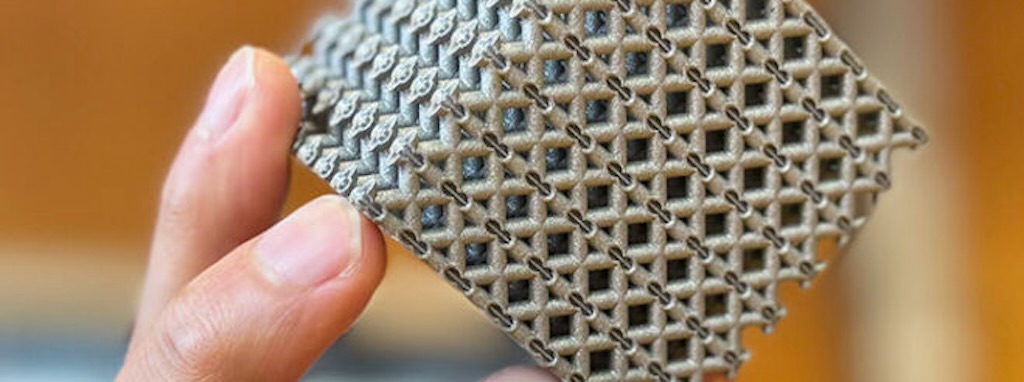
Over the years “meta-something” has taken root in our vocabulary, but what is a “metameterial“?
This article tells us is that using a metal 3D-printing technique it’s possible to create a new material with properties not seen in nature, i.e. with a lattice structure that distributes load stress more evenly, and is 50% stronger than the strongest alloy of similar density.
As you might expect the technique is not a traditional 3D printing, its a technique called “laser powder bed fusion”. This involves a layer of metal powder spread over the base of a printer. A laser is then used to melt the powder in the desired pattern. Another layer of powder is then added to the bed, and the process is repeated, with the newly melted metal binding to the metal below it.

“Most Life on Earth is Dormant” sounds a bit odd. But in fact for most life forms, the ability to shut oneself off is a vital part of staying alive. Harsh conditions can push organisms to slow down their activity and metabolism, and wait for improvements. Sitting around in a dormant state is actually the norm for the majority of life on Earth. By some estimates, 60% of all microbial cells are hibernating at any given time.
Over the years, researchers have discovered a number of “hibernation factors”, proteins that cells use to induce and maintain a dormant state. When a cell detects some kind of adverse condition, like starvation or cold, it produces a suite of hibernation factors to shut its metabolism down.
But now researchers have reported the discovery of a new hibernation factor, which they have named Balon. What’s surprising is that its gene sequence is presence in 20% of all cataloged bacterial genomes. And it works in a way that molecular biologists had never seen before. What it does is enable a cell to rapidly go dormant in an emergency and resuscitate itself just as rapidly to readapt to more favourable conditions.
Read the paper to discover what this might mean!

I like electrons, and I worked with them in the mid-70s. “Physicists Puzzle Over Emergence of Strange Electron Aggregates“. Electrons have a small mass and negative electric charge. They are what defines both current in a wire, and what an insulator is.
It was quite a shock (joke) to find that under an intense magnetic field electrons can lose their individual identities and form “quasiparticles”. But now it looks like electrons can form fractional quasiparticles without the enabling influence of a magnetic field.
It also looks as if some quasiparticles are even stranger, and are called non-abelian anyons, and that means they could form the ideal quantum bits needed for quantum computing.
Here I’m going to throw in an additional article on “Strange Metals, or Where Electricity May Flow Without Electrons“. The whole idea of an electric current is that it’s the collective movement of electrons, each carrying one indivisible chunk of electric charge. But experiments with atoms-thin strand of metal show a dead steady current implying that it’s not made of little units at all. It was like finding a liquid that somehow lacked individually recognisable molecules.
It all started in 1986, when high-temperature superconductors were discovered, i.e. materials that carry a perfect electric current (no losses) even at relatively warm temperatures (this was Nobel Prize physics). But now we have entered the domain of non-Fermi liquids or “strange metals”, but the real issue is that some results suggest to some experts that current moving around strange metals might not be electron-like parcels of charge. Alternative theories abound, and one expert has suggested that these strange metals might show an emergent form of electromagnetism that doesn’t rely on whole electrons.

I’m just going to throw in a taster for “Electric ‘Ripples’ in the Resting Brain Tag Memories for Storage“. The question is how the brain chooses which memories to save. It may be that the brain tags experiences worth remembering by repeatedly sending out sudden and powerful high-frequency “sharp wave ripples”, kicked up by the firing of many thousands of neurons within milliseconds of each other, which are “like a fireworks show in the brain”. Sharp wave ripples were already known to be involved in consolidating memories or storing them, but now they may also be involved in selecting them.

AI Performs at Human Levels on Theory of Mind Tests was actually reported on in several posts.
Theory of mind is based on the understanding that other people have different emotions, beliefs, intentions, and desires that affect their behaviors and actions. This skill is critical for social interactions. It’s what helps people to decide what to say in a tense situation, guess what drivers in other cars are about to do, and empathise with a character in a movie.
And it would appear that research published in Nature showed that AI models could convincingly mimic human levels on theory of mind tests.
Reaction has been quite critical, with one expert warned of the dangers of anthropomorphising software programs. It must be stated that the researchers were careful not to say that their results show that large language models (LLM) actually possessed a theory of mind. But they did find that the best of them, OpenAI’s GPT-4, solved 75% of tasks correctly, which matches the performance of six-year-old children observed in past studies.
Some experts also noted that we don’t currently have a method or even an idea of how to test for the existence of theory of mind, so it’s not clear what it would mean for a LLM to have a model of mind, or how you test for it.

This TIME magazine report is about Valisure, a tiny US laboratory, that has over the past five years detected potentially cancer-causing chemicals in widely used medications, hand sanitisers, sunscreens, antiperspirant body sprays, dry shampoos, and most recently, acne treatments.
Critics and regulators have denounced its testing methods and the legitimacy of its scientific findings, raising doubts about the very doubts the company has raised.
What is certainly true is that the US FDA does not test everything, and retail stores and pharmacies aren’t doing any testing.
Also it’s a reality that it is also nearly impossible to isolate which chemical exposures, if any, are responsible for health problems, because everyone is exposed to [toxic chemicals] at generally very low concentrations all the time.
This is not a simple “black and white” situation, but the article is useful because it should make us stop and think about the effect of very low concentrations of potentially dangerous chemicals that seep into our daily lives, and never go away.

This is a video story suggests that mortality rates among female patients are lower, when in the care of female physicians.
Flood of fake science forces multiple journal closures
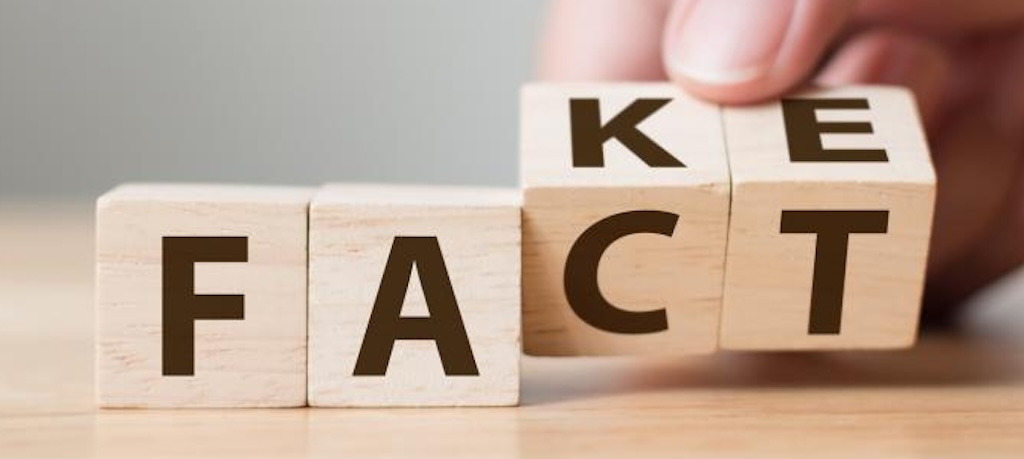
Just a quick mention of the fact that fake studies have flooded the publishers of top scientific journals, leading to thousands of retractions and millions of dollars in lost revenue. So far the biggest hit was Wiley, a 217-year-old US publisher, which announced that it is closing 19 journals, some of which were infected by large-scale research fraud.
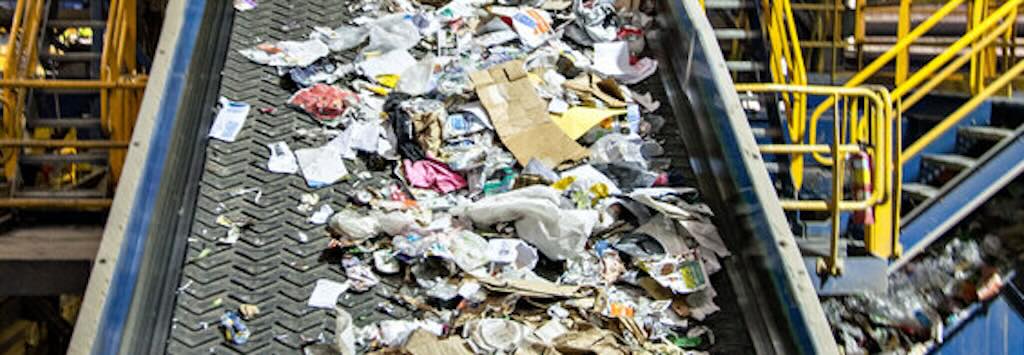
I somehow link this with the previous entry about fake studies.
According to new research, 23% of US bachelor degree programs and 43% of US master degree programs have a negative return on investment (ROI) after 10 years.
On the positive side, it does suggest that more than three-quarters of all bachelor’s degrees have a positive ROI. But master’s are a much riskier bet.
For bachelor’s degrees, fine arts, education, and biology programs had the lowest median ROI, while engineering, computer science, and nursing degrees gave students the highest long-term rewards.
But, as you might guess, the university also counts for a lot. The authors mention an English degree from one university had a $581,925 positive ROI, whereas an English degree from another university in the same state had a negative $30,000 ROI.
One direct result of this is that billions in loans to undergraduates will probably never be repaid. But everyone knew that anyway.

“The human brain has been shrinking – and no-one quite knows why“, tells us that brains of modern humans are around 13% smaller than those of Homo sapiens who lived 100,000 years ago. I found this excellent article particularly informative, if not conclusive, so I’ve copied a lot of it below.
One possibility is that this result from change in thinking style due to the spontaneous invention of language. This led to the neural pathways of the brain being reorganised in a more metabolically efficient way, allowing humans to get more “bang for their buck”. In other words, as smaller and better organised brains were able to perform more complex computations, metabolically expensive larger brains simply became unnecessary.
However other palaeontologists argue that the fossil record shows that brains began shrinking more recently than this, meaning the change couldn’t be linked to language. In a 2023 study, the suggestion is that human brains have been shrinking for about the last 17,000 years or so – since the end of the last ice age. So decreasing brain sizes appears to correlate with periods of climate warming. Smaller brains could have allowed humans to cool down quickly. It’s well known that humans in hot climates have evolved leaner and taller bodies to maximise heat loss. It’s possible that our brains could have evolved in a similar fashion.
Perhaps the most prominent theory put forward to explain our shrinking brains is that it began when our ancestors stopped being hunter-gatherers, laid down roots, and began to build complex societies. The idea is that the birth of complex societies and empires meant that knowledge and tasks could be spread out. People no longer had to know everything, and as individuals no longer had to think as much to survive, their brains reduced in size. It’s not surprising that this theory too is contested.
Yet another idea is associated with the time that man stopped being hunter-gatherers and switched to agriculture. A reliance on farming may have created vitamin and mineral deficiencies, resulting in stunted growth.
Or it many be that human skulls got smaller as a consequence of self-domestication, based on the fact that domesticated species like dogs and cats (which are bred for their friendliness) have brains that are 10-15% smaller than their wild ancestors. But others have argued that self-domestication, if it occurred, must have happened something like 800,000 years ago, and there is no evidence that human brains shrank at that time.
Unfortunately, we don’t know exactly when the shrinkage began.
If brains are shrinking, what does this mean for human intelligence? Depending on which theory you believe, smaller brains could either make us smarter, dumber, or have no effect whatsoever on intelligence.
One conclusion could be that our capacity for greater intelligence is either shrinking, or at least not growing. But over the last 10,000 years mankind has created tools and technologies that allow them to offload cognition on to artefacts. Computer store information and perform calculation. So the brain might need to be optimised for intelligence and brainpower, but that doesn’t mean that mankind (or personkind) as a species collectively is growing less smart.
The Contested World of Classifying Life on Earth
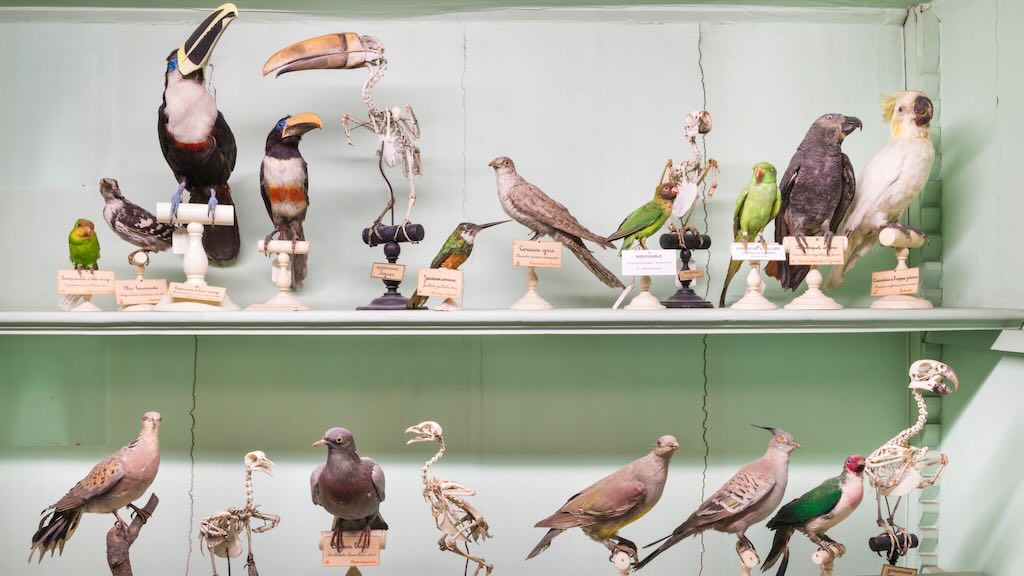
This article is about taxonomy, and specifically about the fact that there exists no single, unified list of all the species on Earth.
This appears to be a bit surprising, as are the heated discussions about how to come up with a single ranking list. Some people consider taxonomy as the most fundamental biological science because it reflects how humans think about and structure the world. A “common shared understanding” sounds like a good idea, but some expert groups wrote that is was “not only unnecessary and counterproductive, but also a threat to scientific freedom”.
This is not an article that will interest everyone, but I just found the whole context both surprising and disappointing.








